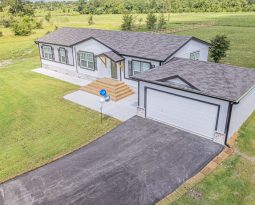NAHB Predicts Rise in Manufactured Home Off-Site Construction Due to Labor Shortage and Declining Housing Affordability
Preface: This following excerpts from a news release by the National Association of Home Builders (NAHB) references off-site housing that includes modular homes and factory-built housing. Both are considered manufactured homes, however, the references do not include HUD manufactured homes, which may or may not be affixed to a permanent foundation. Most HUD Code manufactured home builders also build modular homes built to residential codes. Modular home builders, however, produce only modular homes and other structures, not HUD manufactured homes.
According to the Census Bureau Survey of Construction data and analysis by NAHB the total market share of modular/factory-built single-built family homes was 3% of single-family completions in 2018. The share is expected to rise moderately in 2019 and in the years ahead, due to the ongoing labor shortage in the built on-site residential sector and the need to lift labor productivity amid declining housing affordability. The labor shortage for traditional on-site construction had also triggered growth in modular home construction in 2017, NAHB reported.
HUD CODE MANUFACTURED HOME PRODUCTION WILL NOT BE ADVERSELY AFFECTED BY LABOR SHORTAGE IN ADDRESSING NATION’S AFFORDABLE HOUSING CRISIS
As a result of a thriving economy and the lowest unemployment rate (3.5%) in over two decades, economists suggest as the unemployment rate gets below 5%, the economy is very close to or at full capacity.
HUD Code manufactured housing and modular home production should be minimally affected by the labor shortage. The efficiency of the assembly line and technological production processes of modern manufactured home construction is not adversely affected to the extent as traditional site-built home construction.
In contrast to declining housing affordability of site-built home construction, the manufactured housing industry is producing modern quality homes that are equal, and often superior to an on-site built home, in every respect, with a building cost up to 50% less than the traditional site-built. Manufactured homes are the only significant form of affordable high-quality single-family housing in the nation, and as such will play a major role in addressing America’s affordable housing shortage.
Over the past few years, many manufactured home producers have offered the same floor plan models built to the HUD Code or as modulars in compliance with local residential codes. The percentage of homes built as modular in comparison to HUD manufactured housing is not significant, but that may be changing as the on-site home building labor shortage continues and the demand for affordable housing increases.
SMALL MODULAR HOME MARKET SHARE HAS POTENTIAL FOR EXPANSION
For 2018, there were 29,000 total single-family units built using modular (12,000) and panelized/pre-cut (17,000) construction methods, out of a total of 840,000 total single-family homes completed. While the market share is small, there still exists the potential for expansion. Moreover, the 3% market share for 2018 represents a decline from the years prior to the Great Recession. In 1998, 7% of single-family completions were modular (4%) or panelized (3%). This marked the largest share for the 1992-2018 period.
One noticeable regional concentration is found in the Northeast where 7% of the region’s 54,000 units completed were due to modular construction, the highest share in the country, NAHB reported.







